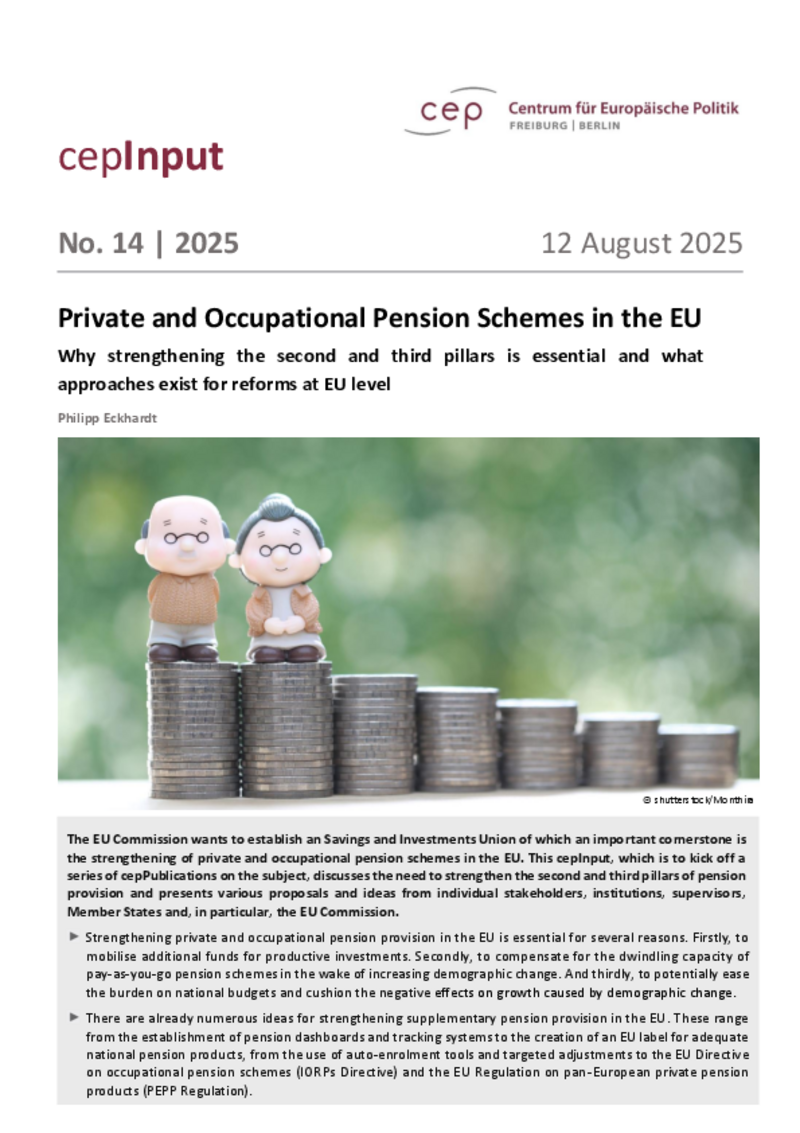
Financial Markets
Private and Occupational Pension Schemes in the EU
cepInput
As part of the planned Savings and Investment Union, the second and third pillars of pension provision in the EU are set to be reinforced. The aim is to attract more private financial assets for investment in Europe, while also supporting the long-term performance of public pension schemes, which generally operate on a pay-as-you-go basis.
Philipp Eckhardt, a cep expert specialising in financial markets, has identified a wide range of interesting reform approaches, including the establishment and development of pension dashboards and tracking systems, the promotion of 'auto-enrolment' models, and the revision of the regulation on pan-European private pension products (PEPP), as well as the introduction of an EU label for long-term savings products.
Europe is currently facing immense and diverse challenges. One that has not yet been adequately addressed is the preservation of sustainable and appropriate pension provision in the Member States. From the cep's point of view, strengthening private and occupational pension provision is a central element of this. This strengthening is primarily a task for national governments. However, the EU can and should make an important contribution through targeted and accompanying measures.
Download PDF
| Private and Occupational Pension Schemes in the EU (publ. 08.12.2025) | 674 KB | Download | |
 | |||



